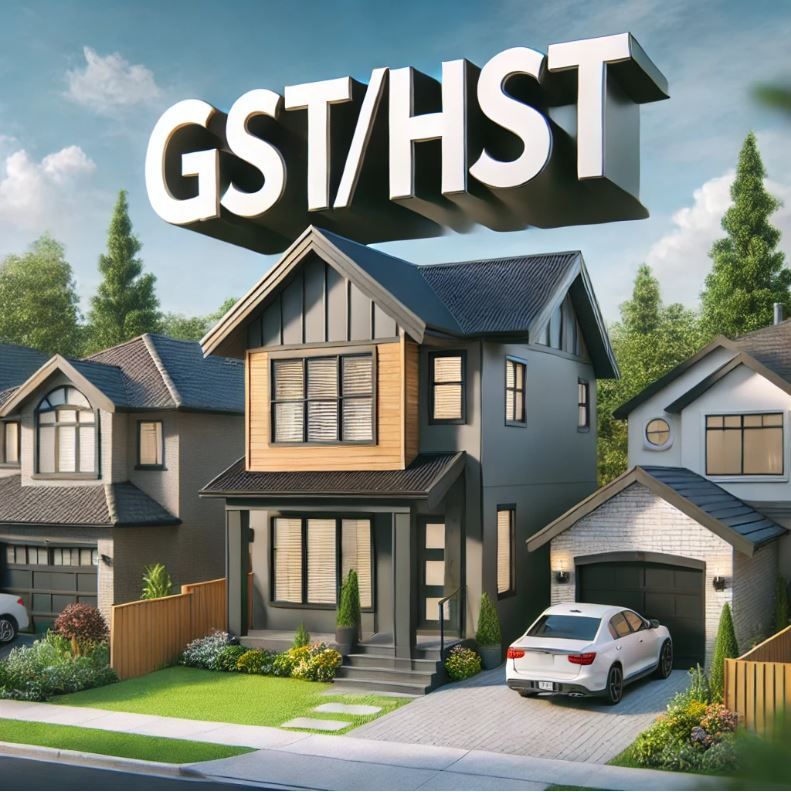Navigating the GST/HST Implications of Laneway Housing in Canada
Navigating the GST/HST Implications of Laneway Housing in Canada
Did you know that constructing and renting a laneway house could come with a tax bill? Learn how GST/HST may apply to your scenario.
Key Takeaways:
- GST/HST may apply to the construction and leasing of secondary housing units, including laneway houses, depending on how the property is used.
- Builders, even if they are not professional contractors, may be required to self-assess and report GST/HST if they rent the laneway house to non-relatives.
- Certain exemptions from GST/HST may apply if the laneway house is occupied by the builder or their close relatives.
- The tax is based on the fair market value of the property once it is substantially completed, and must be remitted upon occupancy if applicable.
In GST/HST Info Sheet GI-168, the Canada Revenue Agency (CRA) outlines the tax implications associated with constructing and leasing laneway houses, also referred to as secondary housing units. As an increasingly popular solution for urban housing shortages, laneway houses are built on the same lot as an existing primary residence. If you are constructing one, it is important to be aware of your tax obligations, specifically with regards to the Goods and Services Tax (GST) and Harmonized Sales Tax (HST).
Who is Considered a Builder?
The CRA defines "builders" broadly, and you can be considered a builder even if you are not a professional contractor. If you are constructing a laneway house with the intention of leasing it to someone other than a relative, you may be required to self-assess and remit GST/HST. This means you will need to determine the fair market value of the laneway house once it is substantially completed and pay GST/HST based on that amount.
When GST/HST Applies:
GST/HST applies when:
- A laneway house is constructed and rented to non-family members.
- The property is considered substantially completed and is leased out to tenants.
In these cases, the person building the house must assess the fair market value of the property and calculate the GST/HST accordingly. The tax is then remitted through a self-assessment process, typically when the property is first occupied.
Exemptions from GST/HST:
There are specific scenarios where GST/HST does not apply. The most common exemption is when the laneway house is occupied by the builder or a close relative. For example, if you build a laneway house for a family member, such as a parent or child, and they are the primary occupants, you would generally be exempt from GST/HST on that unit.
However, if the laneway house is rented to a non-relative, even for a short period, GST/HST applies, and you must report it based on the market value of the house at the time it becomes available for rent.
Self-Assessment of GST/HST:
Builders are required to self-assess GST/HST on the fair market value of the laneway house once it is considered substantially complete. This process involves determining the market value of the house at the time it is first occupied or leased. The GST/HST amount is based on this value, and it must be reported to the CRA in your tax return.
The requirement to self-assess applies regardless of whether the house is rented immediately or after a period of vacancy. As long as the house is intended for lease to a non-relative, GST/HST obligations arise once the property is completed and available for occupancy.
Implications for Builders Renting to Non-Relatives:
If you plan to lease your laneway house to non-relatives, GST/HST will apply based on the fair market value of the home at the time it is completed. This applies to both long-term and short-term rentals. Even if the rent you charge is below market rates, you are still required to remit tax based on the property's fair market value.
Here are a few scenarios to consider:
Scenario 1: Renting to Non-Relatives (Long-Term Lease) Sarah builds a laneway house on her property and leases it to a young couple who are not related to her. Since this rental is to non-family members, Sarah must self-assess the GST/HST based on the fair market value of the house once it is substantially completed. She reports the tax to the CRA in her next tax filing, ensuring compliance with tax laws.
Scenario 2: Renting to Family Members John constructs a laneway house for his elderly parents to live in. Since the house is occupied by his close relatives, John is exempt from GST/HST on the construction and use of the property. No self-assessment or tax remittance is required, as the property is for family use.
Scenario 3: Short-Term Rental to Non-Relatives Emma builds a laneway house and rents it to a non-relative for a three-month period. Even though the rental term is short, GST/HST still applies, as the house is being leased to someone outside of her immediate family. Emma must self-assess and remit GST/HST based on the fair market value of the property when it was completed.
Scenario 4: Builder Lives in the Laneway House Michael builds a laneway house behind his primary residence but decides to live in it himself while renting out his main house. In this case, since Michael is the primary occupant of the laneway house, he is exempt from paying GST/HST, as the property is used as his personal residence.
Table 1: Understanding GST/HST for Laneway Housing:

Disclaimer:
This summary is for informational purposes only and should not be construed as tax advice. Tax laws are complex and subject to change. The application of tax rules may vary based on individual circumstances. It is highly recommended that you consult a qualified tax professional or advisor for specific advice regarding your unique situation and to ensure compliance with applicable tax laws and regulations.
Source: Canada Revenue Agency, GST/HST Info Sheet GI-168



